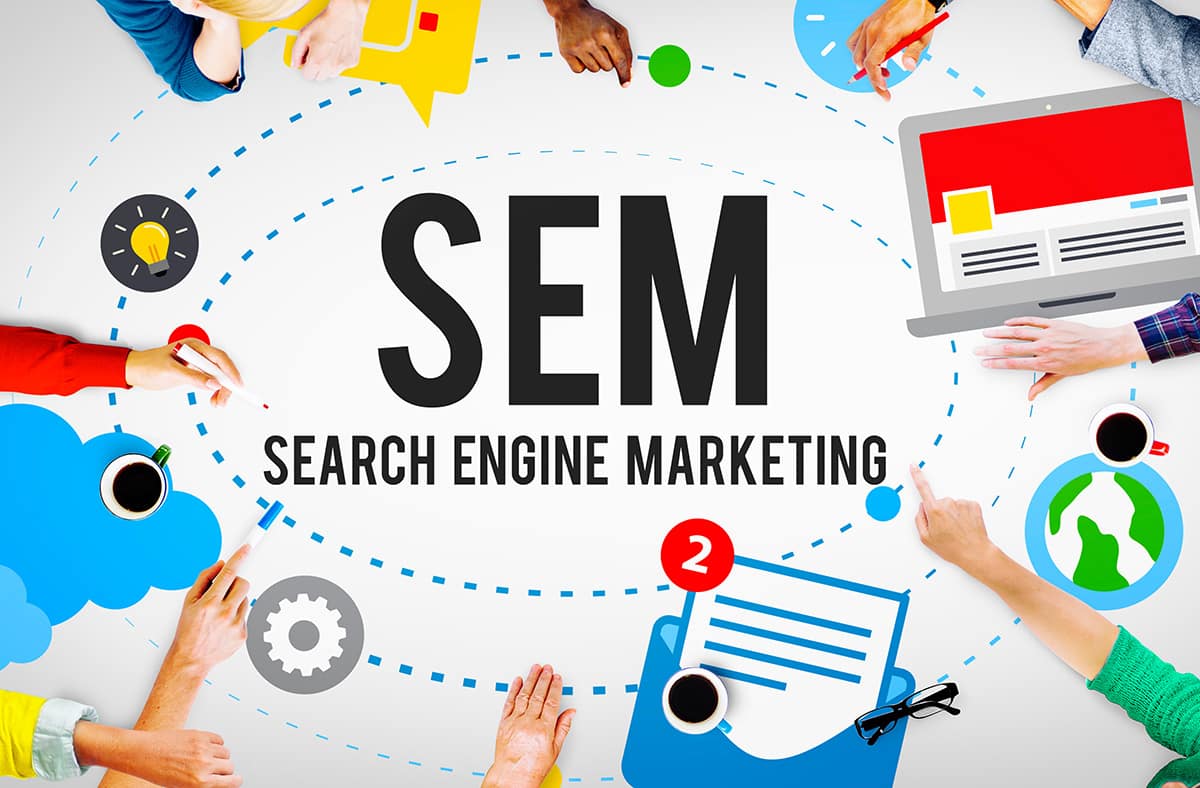What is Search Engine Marketing?
Search engine marketing (SEM) is a form of online marketing whereby through paid advertising you aim to promote a website on a search engine’s results pages (SERPs) and thus increase its visibility.
We previously discussed search engine optimisation (SEO) and how you should use certain tactics to organically (unpaid) promote your website. Now, through SEM, you can fast track the process and climb right to the top of the SERPs.
Why would you advertise on a search engine?
Users generally trust organic search results more, and this results in a click rate that outnumbers paid results nearly 12 to 1. Using SEM will help to increase clicks and conversions in a very short period of time.
Your long-term strategy should focus on improving your website’s SEO, bumping up your content, and improving your website’s overall usability so that search engines recognise your authority or reputation. But in the short term, to compete in the SERPs, SEM will improve your visibility and create awareness.
The advantages of using SEM:
- Reach customers who are searching for your product or service and thus more likely to buy from your company.
- Quickly appear in the search results pages.
- You can see which of your ads are driving sales and which aren’t doing so well. An ad can drive traffic to a particular webpage on your website where you can collect data to determine which content is performing well and which can be improved.
- Using SEM gives you control over which webpages are targeted, thus improving conversion rates. With SEO you can’t specify which pages rank higher in the search listings.
How does SEM work?
You start out by choosing which search engine you want to advertise through. There are several search engines out there, but for the sake of this article we’re focussing on Google and its advertising service Google Ads. As the market leader, Google has around 85% market share, followed by its competitors Microsoft Bing, Yahoo, Baidu and Yandex RU.
Before you set up your campaign, you need to conduct keyword research and choose the relevant keywords that pertain to your product, service, or promotion. Keywords are very important as these are what potential customers are typing into the search engines when they conduct their search queries.
Once that has been decided, you need to specify who your target audience is. You can set your searcher’s location, age, gender, the device they use, or a certain time of day to show your ads.
You then need to create the advert that you want to display in the search results. There are several types of Google ads:
-
- Text ads or Search Network campaigns: adverts include headlines, body copy, a call-to-action, and a link to your website. These appear in the search results – above, to the right of, or below organic listings.
- Image ads or Display Network campaigns: adverts usually include an image. These ads can appear on websites or apps on the Google Display Network.
- Video Ads or Video campaigns: usually 6 or 15 second videos, these ads show right before or during YouTube content.
- App ads: this campaign is generally to promote your app and drive “app installs,” “app engagement,” and “app pre-registration.” Your advert appears in the search results on mobile devices, Google Play, YouTube, AdMob, Discover, and on the Google Display Network.
- Discovery ads: multi-image carousel ads that appear in the newsfeed on the YouTube homepage and “What to watch next”, in Gmail inboxes, and Discover.
- Shopping ads: a product listing on Google. Your advert appears at the top of a product-based Google search and includes pictures and prices. It can also appear on websites and apps on the Google Display Network, and Gmail inboxes.
- Local search ads: displays when someone searches for a business, product, or a service locally. Appears on Google maps, websites, and YouTube. This allows you to advertise only in a certain area and receive leads directly from potential customers.
- Performance Max Campaigns: a goal-based campaign in which Google accesses your assets and automatically tailors your ad to achieve your objective. Your advert can be text, image, multi-image, video and product listing. It will appear in the search results, websites, YouTube, newsfeeds on the YouTube homepage and “What to watch next”, shopping tab on search results, Gmail inboxes, and Discover.
Once your ad is ready, you will need to decide on your budget. You will enter an Ad Auction and bid on the keywords that you previously decided on. You will set a price that you are willing to pay for each click on your ad. Types of advertising pay models:
- Cost-per-click or Pay-per-click advertising: You only pay when someone takes action or clicks on your ad. You’re not charged for your ad to show up in the search results. This is one of the most popular forms of SEM as the search engine, such as Google, is motivated to show the right ads to users — the ones that will get clicked on in order for the search engines to get paid.
- Cost per Impression (CPI) or Pay-per-impression (PPI): You pay for each impression – every time someone sees your ad.
- Cost per mille (CPM): You pay for 1,000 impressions of your ad.
Your ad won’t necessarily appear every time your keywords are searched. Your maximum bid, and your ad’s quality score will play a part. Google will determine if your advert gives the users the best experience. After all, they will possibly only be paid if your advert is clicked on.
Statistics show that:
- The first page of search results gets over 71% of all the clicks.
- 40% of shoppers go to Google when researching a purchase, they plan to make in-store or online.
- More than 50% of Google searches end without a click.
- The average click-through rate in Google Ads is 3.17% for search and 0.46% for display.
- Google Ads allows you to target users who speak more than 40 languages. Microsoft Ads, by comparison, only allows you to target twelve different languages.
Chat to the team at Radical Cloud Solutions if you would like to find out more about Search Engine Marketing and how you can use it to promote your product or website.



